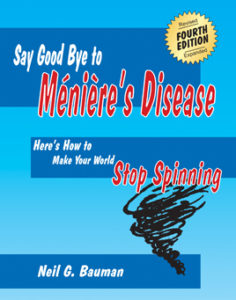by Neil Bauman, Ph.D.
A mother asked:
My son has Large Vestibular Aqueduct Syndrome (LVAS). I know that LVAS is genetic, but is it only the result of getting a gene from both the father and mother, or is it now a strong possibility that when my son, who has LVAS, has children, that they will have LVAS even though the mother does not have the gene? If so, is there an estimated percentage of chance that his kids will have LVAS?
Excellent questions. In order to answer this, we need a brief lesson in genetic inheritance. Here’s how I understand genetics and LVAS.
Genetic conditions may be “dominant” or “recessive.” LVAS is thought to be recessive. This means that both the father and the mother have to carry this gene and pass it on, in order for a child to have LVAS.
(In contrast, if the condition was carried by a dominant gene–then only one parent needs to pass it on. For example, I have a dominant genetic hearing loss. Thus, I have, and pass on, this gene (on the average) 50% of the time. In my case, this is exactly what happened. Of my two children, one has normal hearing and the other has my rare kind of hearing loss.)
Here’s how recessive genetic inheritance works. Each parent has two genes for any given characteristic. These genes may both be either dominant (RR), or both recessive (rr) or one of each (Rr). However, each parent only passes on one of these genes in each child. Which gene is passed on is totally random for each child.
Since LVAS is recessive only a person with “rr” would have LVAS. A person with “Rr” would be a carrier of LVAS but would not have any symptoms of it, and a person with “RR” would not have LVAS, nor carry it.
Thus, each child ends up with one of these three possible combinations. Either:
- The child receives no LVAS gene from either parent. Result, child does not have LVAS, nor is child a carrier of LVAS (RR).
- The child receives one LVAS gene from one parent and none from the other. Result, child is a carrier of LVAS and thus can pass it on, but does not have LVAS himself (Rr).
- The child receives one LVAS gene from each parent. Result, child has LVAS himself (rr), and, of course, could also pass it on to his children (but only if the child’s spouse also passes on an LVAS gene at the same time).
Now let’s look at this from the standpoint of the probability of any given child inheriting LVAS. There are five possibilities.
- If neither parent carries an LVAS gene (RR), then, of course, the child will not have LVAS either. The probability of Number 1 (RR) occurring is 100%.
- If One parent carries the LVAS gene (Rr) and the other doesn’t (RR), the child will not have LVAS but may carry the LVAS gene. The probability of Number 1 (RR) occurring is 50% and the probability of Number 2 (Rr) occurring is 50%.
- If one parent has LVAS (rr) and the other does not (RR), then there is no chance of the child having LVAS, but he would be an LVAS carrier (Rr). The probability of Number 2 (Rr) occurring is 100%.
- If one parent has LVAS (rr) and the other is a carrier of LVAS (Rr), then the child will either have LVAS (rr) or be a carrier of LVAS (Rr). The probability of Number 2 (Rr) occurring is 50% and the probability of Number 3 (rr) occurring is 50%.
- If both parents have LVAS (rr), then each parent HAS to pass on an LVAS gene to the child, and thus the child has will have LVAS (rr). The probability of Number 3 (rr) occurring is 100%.
The above make two assumptions. One, that LVAS is carried by a recessive gene (which is almost certainly the case), and two, that there is only one gene involved in causing LVAS (which is not likely to be the case). If there is more than one gene involved in causing LVAS, then the probabilities are obviously much more complicated than shown above.
The fact that your son has LVAS (rr) means that both you and your husband either also have LVAS yourselves (rr), or you are carriers of LVAS (Rr). This means that only possibilities C, D or E apply in your case.
If you want to learn more about LVAS and how it can affect a person’s ears, point your browser to http://www.hearinglosshelp.com/articles/lvas.htm.


